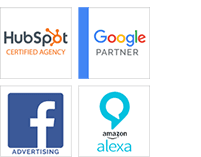
Vital Factors to Consider When Implementing a Growth Driven Web Design
A well-designed site is vital to the online success of your business. Recent studies show that at least 94% of respondents rarely trust websites with poor designs. On the other hand, a growth driven web design is intuitive and positively impacts brand perception and lead conversion.
Growth-driven design is a revolutionary approach to creating high-performance websites founded on analytics and designed with specific objectives for continuous improvement.
Here are some important considerations when implementing a growth driven website design.
1. Customer Needs and Wants
Develop a clear picture of your target audience’s needs and wants, and determine the best way to fulfill them.
This sets the essential foundation for a growth driven web design. Start by developing a clear, focused strategy that pivots on the needs and wants of your ideal customer. While your website will launch with a simple version, focusing on customer needs helps you plan future updates and the continuous process cycle.
Understanding your customer needs requires creating accurate buyer personas. Buyer personas represent your ideal customers and website users. They help your team determine the best ways to communicate with empathy and personalize customer interactions.
In addition, a persona establishes a common messaging tone among your marketing team since they have a clear picture of your website’s end user.
You can start by running internal and external interviews to gather information from employees and past clients representing your ideal audience. Email surveys and phone calls are common when gathering information to finetune your buyer persona.
2. Customer Journey
The customer journey charts the road map for your website users and customers seeking solutions to their problems. Growth driven web design makes it easy to identify different stages of the customer journey and provide appropriate tools and solutions to help customers make quick decisions.
Determining the exact stage in the customer journey is essential in determining appropriate offers, website features, and supporting content for optimum conversions. The goal is to get a comprehensive view of your customer’s actions throughout your sales funnels and ensure satisfaction.
3. Fundamental Assumptions
In growth driven web design, fundamental assumptions are like the foundation for a house. Therefore, you must determine the aspects that exert the most weight on the foundation.

Establishing a strong foundation is essential to ensure the website is versatile and long-lasting. Ideally, ensure the design is aligned with your goals and has the right content to guide your team.
You can accomplish this by combining personas, customer journeys, and analytics to develop fundamental assumptions to guide your design and marketing approach for the best results.
4. Short-term and Long-term Goals
This stage involves establishing goals based on buyer persona data and customer research. Each goal is anchored in business metrics and analytics to ensure the website has all the necessary features. However, it’s essential to know what you want to achieve with your growth driven design web. Your overall business objectives guide the process by creating a clear road map.
In addition, you can brainstorm a wish list of things that might improve your website’s impact on your business and customers. Think about additional integrations, modules, features, and functionality.
This process starts by identifying elements that create the highest impact. Typically, it involves identifying the must-have and nice-to-have elements so you can cross out anything that can be added later. This process allows you to identify the core purpose of your website.
Most importantly, it helps finetune your strategy blueprint for the perfect design based on your business needs. However, your team’s collaboration between the strategist, designer, and project manager is essential to ensure the strategy aligns with your business objectives.
5. Content Development
Effective content strategy is among the key elements of a robust online presence to achieve business goals. While the minimum viable design aims at launching a functional site, it’s critical to determine the ideal content to answer user queries and move customers through the sales funnel. Ideally, you should create memorable content that connects with users and solves their problems.
 The information should be simple, well-organized, and easy to understand. Visual hierarchy helps in content structure to ensure it’s logical and meaningful. This ensures that important information gets the most emphasis while less important information gets the least emphasis.
The information should be simple, well-organized, and easy to understand. Visual hierarchy helps in content structure to ensure it’s logical and meaningful. This ensures that important information gets the most emphasis while less important information gets the least emphasis.
You can achieve content hierarchy by implementing visual techniques like contrast, color, white space, size, movement, and alignment. Content hierarchy improves information digestion and guides users to find important information quickly to fulfill their intentions.
6. Process Cycle
Once you’ve launched the website, it’s important to review its performance to determine the impact on your business goals. The process involves stakeholder feedback to gain insights into traffic sources and visitor behaviors. Real user data is invaluable at every stage as it gives you a clear picture of website activity.
Depending on the analysis results, you can determine the next action based on the items on your wish list.
Possible actions may include:
- Improving conversions by influencing users to take specific actions
- Boost the user experience by enhancing user interaction with the site to ensure easier navigation. Periodic updates are necessary to streamline the design and content.
- Visitor personalization by leveraging user data to implement changes that suit evolving needs, including content offers and calls to action.
- Integrating marketing assets like signup forms, social platforms, resources, and tools to provide more value to users and enhance engagement
7. User Experience
Regardless of your site’s design and the available information, user experience determines its success. You might have invaluable resources on your website, but if the user experience hardships navigating and finding what they want, you risk losing valuable prospects.
While outstanding website usability may go unnoticed by the users, poor usability has immediate impacts. Therefore, your website design must be intuitive, navigable, mobile-friendly, and accessible. Ideally, you should anticipate visitors’ actions and help them achieve their goals effortlessly.
While visual aesthetics are essential across multiple devices, upholding a consistent brand image is critical. The website should represent your business fully and create a strong connection with users.
The Bottom Line
Most businesses are shifting from traditional designs and moving towards growth driven web design. Besides enjoying additional flexibility, the companies experience more success in lead conversion and user experience.
Instead of redesigning and launching a new website every two years, growth driven web design creates an upgrade-ready design that evolves with your business. Moreover, decisions are based on data analytics to ensure upgrades are based on real customer needs.

























